The French Fighter pilot who became a Russian Prince…
An email from Seattle, Washington
On Russian Orthodox Christmas eve (old style calendar) 2016, after returning from vespers with my family and checking my emails before going to bed, I received an unexpected email. Like many of the moments on my journey to uncover the forgotten lives of the Kotchoubey family, it acted as the unexpected catalyst to begin the telling of the final chapters in the life of Prince Mikhail Mikhailovitch Kotchoubey (1860-1937) who was among the last of the male members of the Mikhailovitchi branch of the Kotchoubey princes. A branch whose intermarriages and proximity to the Russian Imperial throne was both a curse and curious tale of the fin de race social relations in Imperial Russia before the Revolution.
From: eric s***
Date: Wed, Jan 6, 2016 at 12:33 AM
Subject: Prince Kotchoubey
To: akotchoubey@gmail.com
Hello Mr. Kotchoubey!
Thank you very much for all the work you put into your family history website. Quite an impressive undertaking! I’m not familiar with how to navigate such a blog, so I was unable to figure out how to reach you through the site, nor could I determine how to register in order to comment, but with the help of whois.com I was able to find your email address.
I am doing research on the families associated with the Chateau du Lac in Sigean, France, toward the goal of writing a screenplay based on my friend Ross Eliot’s book, “Babette.” http://www.amazon.com/gp/product/B00IY3HE3Q/ref=dp-kindle-redirect?ie=UTF8&btkr=1 One of the characters is Prince (Mikhail?) Kotchouby. I’m very curious about this man’s history,and his association with Count Foulques de Baillard de Lareinty de Tholozan. He is pictured here at the right, probably shortly before his death in the mid-1930s, at the chateau. https://rosseliot.wordpress.com/ Do you have any information on this man, or can you point me towards any resources that might be helpful? I am finding very little online…
I am located in Seattle, USA. I recently traveled to France to interview people associated with the chateau, and to photograph this grand old building, and the more information I find, the more intrigued I am. Perhaps you’re familiar with this website? https://sites.google.com/site/sigeanhistoireduchateaudulac/home/la-sombre-destinee-du-chateau-du-lac
Thanks again for your help,
Eric
Here was the motivation I needed to write the story of a man whose existence was made known to me not from the family’s genealogical tables but from a friendship with Alexander, a Russian friend born in St. Petersburg who invited me to his wedding to a beautiful French girl, Dauphine. It turned out, she was distantly related to Prince Mikhail Mikhailovitch and I received valuable clues about his final years in France from her father. Going forward, we will refer to him as Prince Michel. He was after all half French via his mother and through his family’s adventures, he brought a number of French families into our own.
Several years after Alexander & Dauphine’s wedding while collecting information on objects related to the family which had been sold at auction, I stumbled upon the curious icon of Prince Michel’s adopted son. It was in that period that I was struck by the fact that Prince Michel’s world was not only a story about the Kotchoubey family but one about the lives of the Russian Imperial court in emigration, the Faustian bargains struck by Russians looking to regain a lost world during WWII and the unexpected search for the whereabouts of the Grand Duchess Anastasia who was rumoured to have survived the massacre of the Russian Imperial family in Ekaterinburg.
The challenge for any story teller is to find a place to start his tale. In this case, part of the story has already been told and so it would be fitting to begin my version with a reference to the book by Jean-Pierre Gea-Torres entitled: Sigean, Le Sombre Destinée Du Chateau du Lac, Une histoire de Familles Link
The self-published French book has a website and excerpts from the book have been posted on this site and are available to the general public. They give some tantalising clues about the details of Prince Michel’s life in France. Sadly, many of the assertions deserve a rebuttal as they are factually in correct and in some case a gross perversion of decisions and actions that need a more balanced explanation in the context of the 20th century’s cruel events.
The relevant excerpt from Gea-Torres’s website (in French):
….Durant la première guerre mondiale, le comte Foulques de Lareinty-Tholozan et ses frères Jules et Honoré s’illustrèrent dans de nombreuses batailles. En 1915 Foulques s’engagea dans l’aviation à titre volontaire et donna un bel exemple de valeur morale. Il devint par la suite adjoint au commandant Milan Ratislav Stéfanick à l’origine de la création de l’État Tchécoslovaque. Après de nombreuses et périlleuses missions, il partit pour Saint-Petersbourg où il fit la connaissance de la princesse Zénaïde Pavlovna Demidoff fille du prince Paul Alexandrovitch Demidoff et de la princesse Olga née Cheremeteff. Le mariage fut précipité et eut lieu à Kiev en 1917, en pleine révolution russe. Le jeune couple regagna ensuite Paris. Le comte et la comtesse ne s’installèrent durablement au château du lac qu’à partir de 1925. Le domaine était immense et s’étendait sur plus de 760 hectares. l’harmonieux manoir des Sabran idéalement situé entre les étangs et les belles garrigues des Corbières était un terrain de jeu idéal pour les enfants du comte. La comtesse appréciait les plages sauvages de la petite station balnéaire de Port-La-Nouvelle mais elle regretta bien vite les fastes de la Cour impériale et les soirées courues par le Tout Paris. Grâce à la notoriété du son nom qui dépassait le cadre régional, la comtesse eut l’idée de faire du Lac un lieu incontournable pour les artistes et élabora avec eux de somptueuses fêtes. Tout le gotha et la bohème cosmopolite des années 1920 défila au château. Le comte était un homme d’allure sportive, grand et véritablement séduisant. Les trais fins et délicats de la comtesse, sa silhouette élancée étaient représentatif de l’élégance des femmes de son époque. Le comte et la comtesse choisirent une destinée hasardeuse faite de rencontres d’un soir, se souciant peur du quotidien qui allait très vite les rattraper. Pour le comte et la comtesse il était impensable d’abandonner ce mode de vie qu’ils avaient toujours connu.
De nombreux aristocrates russes furent invités au château et le plus célèbre d’entre eux fut sans nul doute le prince Félix Youssoupov, un lointain cousin de la comtesse. Considéré par ses compatriotes comme étant l’un des plus bel homme de l’Empire, le Tout Paris des années folles se l’arrachait. En 1927, poussé par la comtesse, Foulques de Lareinty demanda à être reçu par le prince. Félix Youssoupoff qui n’était pas insensible à la beauté masculine vit arriver chez lui un bel officier qui prétendait être son cousin. Amusé par cette heureuse rencontre, le prince vouera une profonde amitié à son élégant cousin. Cependant Les deux hommes ne partageaient pas les mêmes convictions politiques et leurs échanges furent parfois houleux.
La fin des années 1920 et le début des années 1930 ne laissaient rien présager de bon pour le comte et la comtesse. Une succession d’évènements tragiques se succédèrent laminant peu à peu les finances du couple. Après le Krach boursier de Wall Street de 1929, la crise financière s’abattit également sur la France et fut suivie d’une récession qui s’aggrava au fil des années, conduisant le pays vers une grave dépression. La viticulture fut très durement touchée à cause d’une surproduction endémique . Le château du Lac qui tirait ses principaux revenus de la vente du vin ne fut pas épargné. Le comte vit ses revenus baisser de plus de 50%.
En 1936 le Front Populaire et les accords de Matignon précipitèrent le déclin financier de la famille Lareinty-Tholozan. Alors que dans les autres pays la crise semblait fortement s’atténuer, la France s’enlisait également dans l’instabilité politique.
Après son divorce en 1937, le comte fut confronté à la dure réalité du changement social mais aussi aux chiffres qui n’étaient pas moins rassurants. Il fallait se rendre à l’évidence, il n’était plus en mesure d’entretenir son château. Il fut contraint de morceler son domaine en le vendant pièce par pièce. Ces mesures d’urgence comblèrent dans un premier temps une partie de ses créances. Ce fut la seconde Guerre Mondiale qui précipita sa chute. En 1941 accablé de dettes le comte avait vendu la majorité de ses terres. Il eut la folle idée de faire démonter son château et de brader tout ce qui pouvait être récupéré. Portes, fenêtres, cheminées, boiseries, tout fut liquidé même les ornements de la chapelle.. Le comte conserva les deux pavillons pour lui et ses enfants. Le beau Manoir n’était plus qu’une triste ruine.
Durant la difficile période de l’occupation le comte commis l’erreur de mal choisir son camp. Foulques de Lareinty-Tholozan avait été adopté par le deuxième mari de sa belle mère, le prince Kotchoubey. Certains prétendent que le comte pouvait faire valoir ses droits sur l’Ukraine et qu’il pensait pouvoir récupérer les immenses domaines de son père adoptif, si l’Allemagne venait à gagner la guerre. En 1944 alors qu’il résidait au Lac avec sa deuxième épouse, le comte fut arrêté par la résistance et fut traduit devant la cour martiale de Narbonne. Les accusations portées contre lui étaient graves. Il fut exécuté à Narbonne en septembre 1944.
Aujourd’hui les ruines du château trônent majestueusement au milieu des vignes comme les vestiges d’un douloureux passé que l’on souhaiterait effacer. Les seigneurs du Lac sont tombés dans l’oubli, laissant place à de grandes familles dont la noblesse ne fut pas un rempart contre cette sombre destinée.
A distant Kotchoubey uncle discovered at a Wedding in Monte Carlo.
In 2010, I attended the wedding of my friend Dr. Alexander Titomirov, a geneticist come business tycoon who was born in St. Petersburg and found success in the USA. He was marrying Dauphine de Villeneuve-Esclapon in a lavish wedding in Monte Carlo. The wedding in the main Cathedral was followed by a reception and dinner overlooking the Mediterranean sea and the guests who were dressed in their summer finery glowed with the warmth of the setting summer sun. Somehow, I could not help but think of Monte Carlo and the whole Cote D’Azur as an integral part of a forgotten glamourous Russian world juxtaposed against another world in a distant land buffeted by cold winters and a vast landscape that seemed so out of place with the pleasant breeze and the warm hues of a mediterranean summer evening. The reminders of that world are the St. Nicholas Orthodox Cathedral in Nice, the former Kotchoubey palace which is now the Musée des Beaux Arts and thousands of tombs overlooked by gravestones and crosses standing silently over the remains of the Russians who passed through the region since the mid 19th century. I could not help but think of my own great grandfather, Mikhail Nikolaivitch Kotchoubey (1863-1935) who was apparently buried in the Russian cemetery in Menton, France. I still have not found his grave.
As the day fell into evening, we arrived at the reception and passed through the receiving line.
As I introduced myself and congratulated the various members of the family, I got a quizzical look from the father-of-the-bride, “Louis Romée” Marie Humbert de Villeneuve-Esclapon. He was an elegant gentleman, not very tall but with an exquisite some might say fragile provincial French aristocrat’s presence. I noticed him looking at me and staring at me in a distracted manner for the longest time. As several well wishers with champagne glasses in hand mingled in our midst, he looked up at me and practically blurted out a question that was likely burning inside him ever since the wedding invitations went out, “are you a real Kotchoubey?” When I answered in the affirmative, all decorum seemed to fall away and he embraced me as his long lost cousin. Romée explained to me that he had a Kotchoubey cousin and after the wedding he sent me a copy of his mother, Dauphine de Sabran-Ponteves’s family history. Sure enough, in the photocopied pages of the illustrious family’s history there was a reference to Prince Foulques de Tholozan-Kotchoubey.
After pouring over the Sabran-Ponteves family history and genealogical tables which are available online (see: http://gw.geneanet.org/sderoux?lang=fr&pz=louise+claire+marie+isabelle&nz=de+roux&ocz=0&p=louis+romee+marie+humbert&n=de+villeneuve+esclapon), I was able to establish the connection between the de Villeneuve-Esclapon and de Lareinty de Tholozon family which while distant clearly was close enough that Romée knew about the connection to the Kotchoubey family. In simplified terms, Romée’s mother was the third cousin of our French fighter pilot protagonist, Foulques.
Here is the explanation:
1) Louise Delphine Marie Valentine de Sabran de Pontevès (1864-1914) was the mother of Foulques de Baillardel de Lareinty de Tholozan.
2) Her grandfather was Marc-Edouard de Ponteves, the 2nd Duke de Sabran (1811-1878).
3) His twin brother was Joseph Léonide de Ponteves (1811-1883) whose grandson was Guillaume de Sabran-Ponteves (1880-1931).
4) Louise and Guillaume were thus second cousins as their grandfathers were brothers (and twins).
5) Guillaume was the father of Dauphine de Sabran-Ponteves who married Edouard “Romée” Marie de Villeneuve-Esclapon and so Dauphine and Foulques were third cousins.
6) Dauphine and Edouard’s son Romée is the father-of-the-bride.
One cannot begin to wonder if this chance encounter at the wedding in Monte Carlo was in some ways a cosmic message that pushes people to grab the unraveled threads of a family’s story and weave them back into the context of a contemporary life. Suddenly, I had a tantalising clue into a member of my family whose memory was fading like the ruins of the Chateau Du Lac where he had spent the last years of his life.
Prince Michel Kotchoubey / Prince Mikhail Mikhailovitch Kotchoubey (1860-1937)
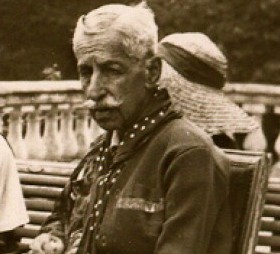
Thanks to Eric’s email from Seattle and the reference to his friend, Ross Elliott’s blog site we get to catch a glimpse for the first time at the face of Prince Michel He was among the last of the Princely line of the Kotchoubeys and thus among the last male descendants of Prince Victor Pavlovitch Kotchoubey. He died with no children of his own but he died with the knowledge that his adopted son-in-law, Foulques and his son Honoré would both carry his name after his death. Alas, it was not to be the case because in a cruel twist of fate both his adopted son and grandson died seven years after him, both sacrificed at the altar of the God of Mars. It may even be that his adopted grandson Honoré was executed as a POW in Russia in August 1945, one of only three Kotchoubeys to die at the hands of the Soviets.
His presence in France was not haphazard either as the family were fluent French speakers and as early as the end of the 18th century, the young scions of the Kotchoubey family were being educated by French tutors. Many of the family were in Paris with the Russian forces in 1814 and so begun a long association with the country.
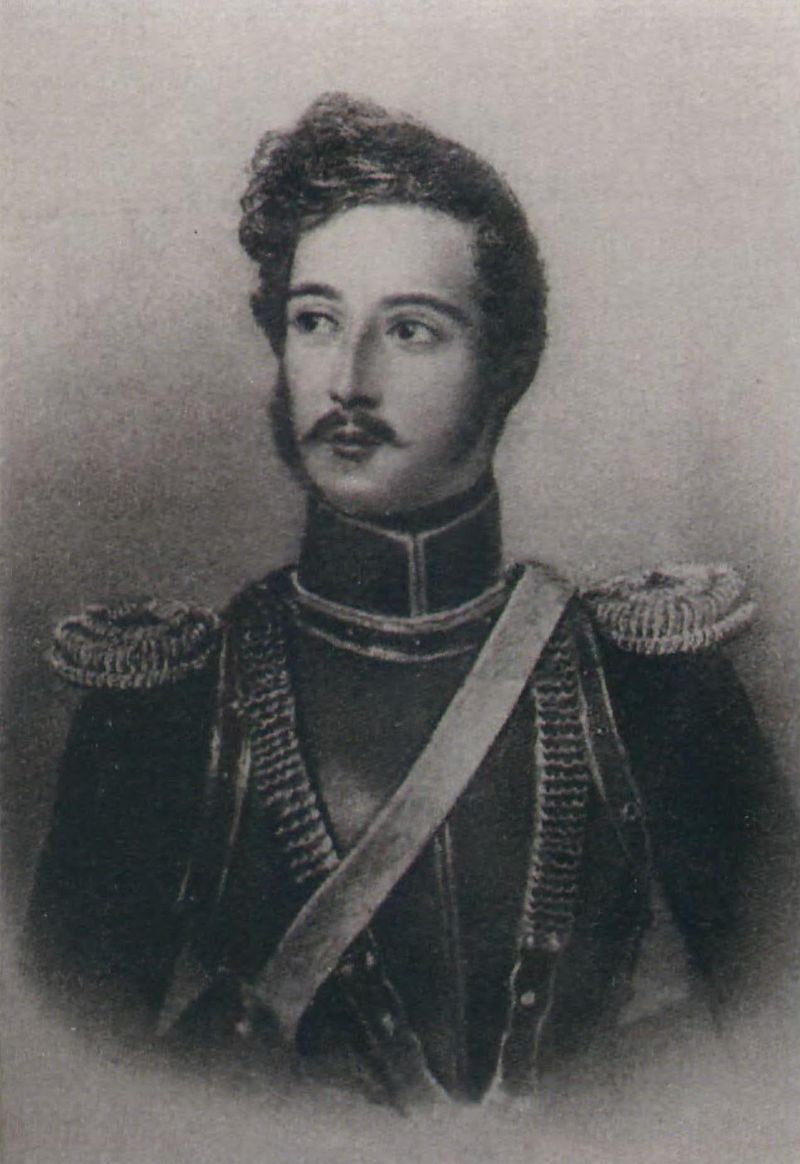
It was, in fact, Prince Michel’s father, Prince Mikhail Victorovitch (the son of Prince Victor Pavlovitch) (1816-1874) who after losing his first wife in 1843, met Maria Eugenie Alice Bressant (1838-1909), the daughter of a French actor and theatre impresario. She was an accomplished musician and wrote a number of songs that were popular in the mid-19th century.
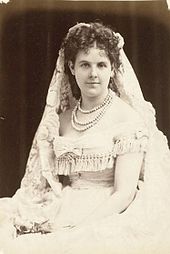
She bore her husband four children, and they were almost all born out of wedlock. However, in 1869, they married and the Emperor Alexander II legitimized all their four children. It is difficult to know if young Michel was stigmatised as a child in St. Petersburg as his parents were not married but my guess is that he was hardly aware of his parents marital arrangements. In any event, he was only 13 when his father died in Kiev in 1874 and by that time, he would have been enrolled in the elite school of the Corps des Pages and on his way to becoming a cavalry officer.
Childhood:
As the eldest boy who arrived late in his father’s life, he would have grown up in a sumptuous household. His childhood home in St. Petersburg (located at 7, Konogvardeiski Boulevard) was the celebrated House of the Moors which was designed by the architect Harald von Bosse and completed in 1857. It still stands today. However, it was sold in 1867 and the family then traveled abroad and spent time at their estate near Moscow in Podolsk where Prince Mikhail was named the Marshall of the Nobility a year before his death in 1874. In the meantime, young Prince Michel would have grown up in a French speaking home and at the age of 7 would have been sent to the Corps des Pages along with other young boys from the elite of Russian society. I suspect there was nothing remarkable about his childhood and upbringing and he was later commissioned a cavalry officer in the illustrious Hussar Guards regiment while taking care of his lands near Moscow, which he inherited from his father. Prince Michel’s mother shortly after the death of her husband in 1874 moved to France and in 1878 married a M. d’Artigues. This is certainly an important point that already links Prince Michel with France.
Marriage:
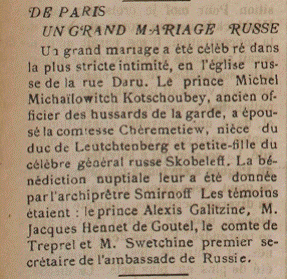
Prince Michel married Countess Olga Vassilievna Cheremeteva (1876-1967) the daughter of Count Vassili Petrovitch (1836-1893) and Olga Dmitrievna (1847—1898) the daughter of a member of the illustrious Skobolev military family. As discussed above, it goes without saying that the Cheremeteffs were among Russia’s wealthiest and most powerful families (see attached article in French).
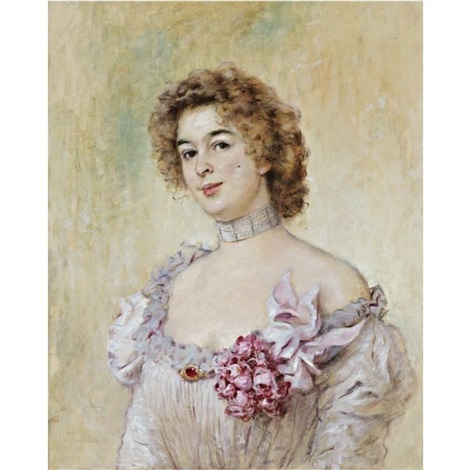
Prince Michel’s new wife, Olga was the ex-wife of Pavel Alexandrovitch Demidoff (1869-1935) whom she married in 1894. Olga in her own right one of Russia’s wealthiest heiresses and Pavel was also the scion of Russia’s wealthiest family. while in numerous references the Demidoffs are referred to as princes, they did not carry the title Russian title of Prince. In some way, like the Kotchoubey family, there was in fact a princely line but the line was an Italian princely line given the title by the Grand Duke of Tuscany in the early 19th to permit a family member to marry the niece of Emperor Napoleon Bonaparte, Princess Mathilde Bonaparte. To allow for a marriage of equals, Anatole Demidoff was given the title of 1st Prince of San Donato.
The marriage between Olga and Pavel in the context of a US marriage would have been like the Rockefellers marrying the Vanderbilts. Unfortunately, this marriage was not successful but it produced three children; Olga Pavlovna (1895-1982), Alexandra Pavlovna (1897-1989) and Zinaida Pavlovna (1899-1991). So when Prince Michel married Olga on 26.07.1901 in a sumptuous but intimate wedding in Paris at the Alexander Nevsky Russian Orthodox Cathedral, he not only became a very wealthy man by marriage but he also became a step father to three young girls and the youngest one would prove to be the path to his presence in your screenplay. For at least 16 years the family lived in a marriage full of promise and significant responsibilities as Olga had inherited forests and estates in Nizhni Novgorod which she administered with her siblings. At least for a time, it gave the couple a very substantial income on which to live.
Connection to the de Lareinty-Tholozan Family:
After the revolution of 1917, Prince and Princess Kotchoubey moved to France where they already had substantial ties including many Kotchoubeys who had emigrated to the country as well as property. Indeed, they even had a French son-in-law because comte Foulques Louis Marc Ernest de Baillardel de Lareinty de Tholozan (1895-1944) had just married Zinaida “Zina” Pavlovna Demidova (1899-1991) in the midst of the Russian revolution.
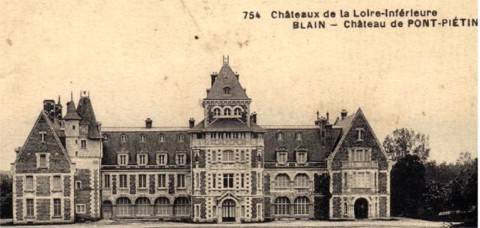 Foulques and Zina moved in 1918 to the family chateau, Pont-Piétin in Blain, France and their first daughter, Alyette Olga was born there in 1918 but did not survive infancy. it is unclear if Zina was joined by her parents who would have otherwise had the means and the family connections to live in Paris or Nice (info from Bruno G. See below.)
Foulques and Zina moved in 1918 to the family chateau, Pont-Piétin in Blain, France and their first daughter, Alyette Olga was born there in 1918 but did not survive infancy. it is unclear if Zina was joined by her parents who would have otherwise had the means and the family connections to live in Paris or Nice (info from Bruno G. See below.)
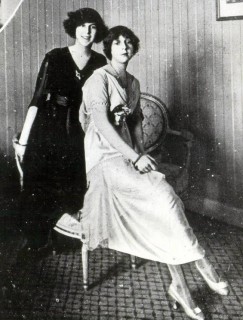
Note: The protagonist of the story died as Comte DE THOLOZAN, Prince KOTCHOUBEY, a name which he had from 4 June 1930 to 6 September 1944. He was an officer in the French Air Force and an aviator.
- Count Foulques Louis Marc Ernest de Baillardel de Lareinty de Tholozon was born on 20 December 1895 in Paris (75)
- He died by execution on the 6th September 1944 in Narbonne (11) at the age of 48.
- His son count Foulques Honoré Pierre Jean de Lareinty-Tholozan, Prince Kotchoubey born in 1922 may have died in March 1945 at the defence of Kolberg according to one internet source, but the lack of information regarding his death is a mystery that will be discussed below.
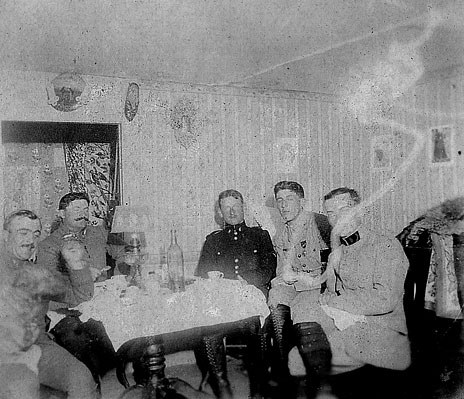
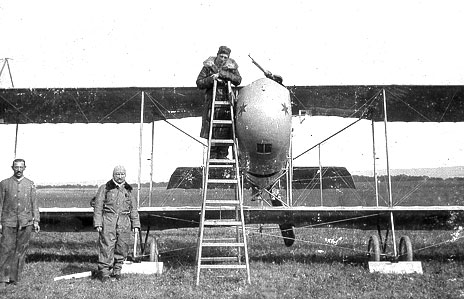
The wedding which took place in Kiev was written about in the newspapers and today we have a few lines from the wedding in the French press, Le Gaulois, we learn a few precious tidbits of information regarding (see: Link) the wedding which was celebrated on the 7th of August, 1917. Among the guests at the wedding were both the groom’s and the bride’s family and the witnesses included; for the groom: the General Maurice Janin (see below) and the Marquise de Lareinty-Tholozan, Captain aviator of the French Airforce mission to Romania (Foulques’s eldest brother, the Marquise Jules Louis Clément Valentin Baillerdel de Lareinty de Tholozan (1886- 1946) (see: link); the witnesses for the bride were prince Koudascheff and prince Korretsky, fiancée of Alexandra Pavlovna “Alix” Kotchoubey (author’s note: incorrect citation in the article as she should have been referred to by her maiden name Demidova), older sister of the bride.
Foulques marries into the Russian Imperial World and a nest of intermarriages.
Foulques’s timing was nothing but unfortunate because indeed his marriage to Zina was to give him access to the Russian Imperial court in an unparalleled way. On the other hand, given the extent of the intermarriages and rather incestuous nature of the alliances of the descendants of Prince Victor Pavlovitch Kotchoubey (1768-1834) perhaps it was best that Foulques arrived on the scene in the dying years of the Empire.
Whatever the timing, there is no doubt that the characters he met and the stories he heard gave him a tantalising proximity to Russian imperial power, which in turn may have fuelled his own desire to find restitution and in his son the desire to fight the Bolsheviks in the 1930s. The new Countess de Lareinty de Tholozan’s (née Zinaida “Zina” Demidova) step-father, Prince Michel was a member of perhaps among the most connected families to the Russian imperial court. His brother, Prince Lev Mikhailovich Kotchoubey (1862-1927) was married and at that point divorced from Countess Daria Evgenievna de Beauharnais (1870-1937) the daughter of Prince Evgeniy Maximilanovitch Romanovski, the 5th Duke of Leuchtenberg / Евгений Лейхтенбергский (1847-1901) who was the son of the Grand Duchess Maria Nikolaivna. Apart from the clear lack of chemistry, the divorce did not come soon enough since a son Eugene was born. If the rumours are to be believed, Daria’s father was the illegitimate son of Grand Duchess Maria Nikolaivna and her lover Count Gregory Alexandrovitch Stroganov / Граф Григорий Александрович Строганов (1824-1878). This would be acceptable in most Russian social circumstances in so much as Gregory was not a related party. Unfortunately for Lev Mikhailovich, if the story is to be believed and certainly St. Petersburg society was ripe with the rumours then Gregory Stroganov who went onto to marry the Grand Duchess in 1853 was in fact his first cousin as he was the son of Countess Natalia Victorovna (née Princess Kotchoubey) (1800-1854) and her husband Count Alexander Grigorievitch Stroganoff / Граф Александр Григорьевич Строганов (1795-1891). This would make his bride Daria a not only a grand-niece but her father a nephew. For the sake of preserving some sense of decorum, let us hope that these rumours were false.
These connections are important as we discover later Foulques become entangled in this almost incestuous web of intermarriage. Prince Evgeniy, the 5th Duke of Leuchtenberg marries Countess Daria Konstantinovna Opotchinina (1844-1870) in 1869 and she dies in the same year or shortly after giving birth to his only daughter, Daria. Several years later in 1878, the Duke marries Zinaïda Dmitrievna Skobeleva (1856-1899) but no children come from this marriage. Zinaida is a fabulously wealthy heiress. She is the daughter of General Dimitri Ivanovitch Skobelev/ Скобелев, Дмитрий Иванович (1821-1879) and Olga Nikolaïevna Poltavtseva (1823-1880). The General has another daughter, Olga Dmitirevna (sister of Zinaida) who marries the Count Vassili Petrovich Cheremeteff / Василий Петрович Шереметев (1836 — 1893). Their daughter Olga Vassilievna (1874—1967) is non-other than the wife of Lev’s brother Mikhail.
Yet another sibling, Mariamna Mikhailovna Nilova (née Princess Kotchoubey) (1866-1954) was married to Admiral Konstantin Dmitrievitch Nilov / Константин Дмитриевич Нилов (1856-1919) who was among Tsar Nicholas II closest friend who accompanied him on all Imperial sea voyages, especially aboard the Imperial Yacht, Standardt. Tragically, he was killed by the bolsheviks in 1919. His widow Marianma fled to France after the revolution and surely saw her brother, Prince Michel in their years in exile.
Among Prince Michel’s cousins is the proprietor of the famed Kotchoubey estate, Dikanka, Prince Sergei Victorovitch Kotchoubey who is also close to the court. Not only as a friend to the Tsar and his family but also an aide-du-camp, master of the Household Treasury and family confident. he and his family flee to Europe, too. In the case of Prince Serge and his wife Princess Elena Konstantinovna (née Princess Beloselskaya-Belozerskaya), they flee to Wiesbaden, Germany where he dies shortly after the Revolution.
The father of both Jules Louis Clément Valentin and Foulques Louis Marc Ernst along with their brothers Honoré Pierre Jules Louis Guillame, and Sosthene Guillaume Jean as well as their sister, Alyette Louise Marie, was Jules Jean Marie de Baillardel baron de Lareinty, “marquis” de Tholozan (1852-1900). He passed away when Foulques was only five and while Foulques was not quite an orphan and not lacking father figures in this otherwise close knit family, it nonetheless leaves the first marker in the journey that Foulques undertakes when he accepts to be adopted by his step father in 1930.
The story of the young WWI ace provides some tantalising clues which are referenced in a number of sources including an article in Le Figaro [No 4607] from 30/06/1959 which carried the sensational article: CE QUE JE SAIS D’ANASTASIA PAR LA COMTESSE DE LAREINTY-THOLOZAN and then a book by Dominique Auclaires published a few years later which is entitled«Anastasia qui etes-vous?» which was published by Librairie Hachette, 1962 (link). In an excerpt from the book (which may be partly fictional) we meet the countess Zinaida “Zina” de Larenty de Tholozan (née Demidova) who is quoted in the context of the false Anastasia or Anna Anderson affair. For the purpose of this story we will focus on her reminiscences of her husband, Foulques and General Maurice Janin as it gives us some tantalising insights into his experiences in Russia and connections to the Bolshevik revolution which may partly explain his actions in the future:
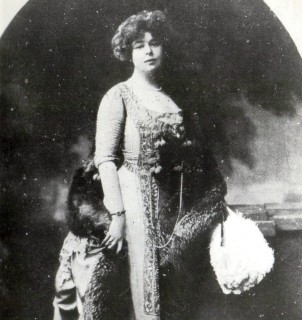
…My mother, Princess Kotchubey, my aunt, Admiral Nilov, they all knew the imperial family….General Janin (Pierre-Thiébaut-Charles-Maurice Janin (October 19, 1862, Paris – April 28, 1946) was a French general as of 1916 who was head of the French military mission in Siberia during the Russian Civil War) was a close friend of my husband, Count Foulques de Lareinty-Tholozan. Because he was brought up in France, I met my future husband in 1917 in St. Petersburg, where he arrived from the Romanian front, as a young officer. There he made a small stop. Returning to France, shortly after us, on 30 August 1918, Janin once again went to Siberia, to take command of the allied forces that fought against the Bolsheviks. General Janin was requested to conduct an investigation in Yekaterinburg. In this investigation he was helped by the Russian General Dietrichs, whom he met at the main headquarters in Mogilev. General Dietrichs came to Yekaterinburg three days after the assassination of Czar Nicholas and his family, when the fire was still smoldering on the mangled remains of the burned victims.
General Yanin received fragments of the remains of the martyrs from the hands of the investigator Sokolov with a request Janin to promise to bring these remains with his own hands to the Grand Duke Nicholas, the head of all the Russian Grand Dukes and the former chief of the Russian army.
Gilliard was present, but he did not know that General Janin promised Sokolov.
Back in Paris, the general visited us and spoke about the progress of his mission. A few days later he saw us again. He was excited and confused. Grand Duke Nicholas did not even accept the remains. Lieutenant Dmitriev advised him to hide the sacred remains in the trunk, or to transfer them to the former ambassador to Russia, Mr. de Giers.
– I’m just an ordinary immigrant, said the Grand Duke, to justify his refusal.
We were shocked by this response and are out of compassion. This is me for weeks and kept at ambient color box with the sacred relics of our rulers, as well as a small vessel with a posthumous finger of the Empress!…
…I did not know Mr. Gilliard, personally, but given what I heard about him I was very surprised that during the hearing, which took place last year in Wiesbaden that Gilliard was regarded as the most faithful follower of Nikolai II, and the best ally of General Janin.
He told us about the many persistent rumors that one of the grand duchesses escaped and fled from Siberia….
…The story of Madame de Lareinty-Tolozan’s chapter concludes with an exacting attack on Mr. Gilliard. Only God can judge the purity of thoughts and acts of men.
In 1930 according to internet sourced documents there was an official act of adoption. Prince Michel adopted his son-in-law comte Foulques de Lareinty de Tholozan who took the name Prince de Tholozan-Kotchoubey (in some cases he continues to be referenced as comte de Baillardel de Lareinty-Tholozan, Prince Kotchoubey. The adoption came against the backdrop of a world financial crisis which according to Gea-Torres nearly bankrupted the family and ultimately undermined his marriage to Zinaida “Zina” and they were finally divorced in 1937. It goes without saying that there would now have been a considerably less amount of financial security following the revolution and while there may have been enough funds to put food on the table and clothes on the family’s back, by all accounts, the amount of money available was slowly shrinking.
A few years ago, an auction house, Aspire Auctions, sold a small 1 1/2 inch icon of the Theotokos of the Passion which belonged to Prince Foulques de Tholozon-Kotchoubey. Since he took his adopted name after 1930, the icon from Cartier must have been given to him after he took the new name. It is an image that is at once recognisable as that of the Virgin and child that is believed to have been drawn by the Evangelist St. Luke. It is also known as Our Lady of Perpetual Help. Given the tragic story of Foulques who was shot in September 1944 as a German sympathizer by the French army, it appears that the icon did not provide him the help he needed as the telegram confirming that he was an English spy arrived only after he was shot.![]()
![]()
Foulques was part of the French establishment. The grandson of a Duke and member of the Jockey Club Link. So the question remains, why would the favoured son of France’s elite, the son of a decorated aviator and himself an aviator turn his sympathies to the German effort. Foulques’ personal decisions may have been financially driven but he was not the only one in the family to be a German sympathiser. In historical documents there is evidence that between 22 juillet 1943 – 1er septembre 1944 his son Foulques Honore Pierre Jean de Lareinty-Kotchoubey joined a nascent French SS Brigade or the milice which eventually became part of the Waffen SS under the initial command of SS-Frw.Obersturmbannführer Joseph Darnand who was one of the founding members of the French Waffen SS. According to one online source, on 8 August 1943 at the German Embassy in Paris, Darnand is named the SS-Frw.Obersturmführer and he is anxious to arm the militia, a right wing French nationalist group under the protection of Marshall Petain and vehemently anti-communist. Indeed in the the 1930s, the French countryside was full of pro-communists. He receives arms from the High Command of the Waffen-SS after he is joined on the 11 October 1943, by a few dozen men who join to become the backbone of the future Waffen SS in France. Among those listed is the young Foulques (Honoré) de Baillardel de Lareinty-Tholozan (milicien of Narbonne) (Link), son of Foulques Louis Marc Ernest.
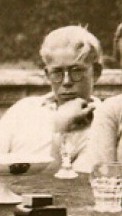
The answer to the de Lareinty-Tholozan’s sympathies to the German cause is not that simple. In the first instance, young Honore was probably swept up in the French nationalist milice movement which was eager to receive arms as the war continued to extend to all corners of Europe. One historian, Krizstian Bene, suggests (see: La collaboration militaire française dans la Seconde guerre mondial) that the decision of many young French men to join non-French military forces may have stemmed from a disillusioned or mistaken belief that this could be a path to join de Gaulle’s Free French forces. More importantly the desire to fight Bolshevism and the Red Army overrides even the French German conflict. Surely, Honoré’s upbringing under the influence of his adopted Kotchoubey grandparents and his mother Zinaida (née Demidova) would have instilled in the young Russian-French boy a burning anti Bolshevik stance. Bene goes on to write that Darnand presented a small band of men who swore allegiance to the Waffen SS and motivated in part with the desire to obtain arms for the Milice.
Another book, by Robert Forbes published in 2010 and entitled For Europe: The French Volunteers of the Waffen-SS discusses the challenges of understanding the motivations of the original volunteers many of whom tried to join the LVF or the Légion des volontaires francais contre le bolchevisme which was created the 8th July, 1941. In his book, he mentions that Honoré reached the rank of Oberscharfurher and he mentions that they were on the ‘books’ of FLAK company (6th company of the Sturmbrigade and then designated the FLAK Company (air defense) of the French SS-Sturmbrigade) in April 1944 but it appears that they were never seen by members of the FLAK Company (see p. 57).
Mystery of the Disappearing Count
In early, 2016, I received an email from Bruno G. and begun a fascinating correspondence with him. In his initial email he attached a photograph of the young Honoré and confirmed that the young man, his father and even his sister Constantina-Louisa “Consolata Marie” White (née Baillardel de Lareinty Tholozan, Princesse Kotchoubey (02.06.1925-27.02.1976) who had joined the German Red Cross were all in the German war effort. According to Bruno, a French volunteer had seen Honoré in Kolberg during one of the final battles of WW II of 4th to 18th March 1945 as the Soviet Army advanced on to Berlin. The information appears in a German document posted on a Ukrainian website: (see: lander.odessa.ua/doc/girg_auftrag.pdf) entitled: Hagen Berger In Hitlers Auftrag hinter den feindlichen Linien WALTER GIRG Geheimeinsatze in der Uniform des Gegners Ein Eichenlaubtrager zwischen Skorzeny
The mystery unfolds as it appears that Honoré’s name is not on the list of any of the soldiers killed in battle according to Polish Russian and German records. Could be that he was taken by the Red Army and disappeared into the Soviet Union and its dreaded Gulags for German POWs? Was his Russian name enough to spare his life for a brief moment? The other possibility was that he may have escaped on a ship as the remaining soldiers in the 33rd Waffen division or the Charlemagne division were evacuated by sea. Perhaps, he traveled further to Argentina, changed his name and died under a new identity. In any case a number of problems seem to be presented in the photograph which is posted below.
It should be noted that while no official record of his death appears to exist, according to Richard Landwehr the author of the book French Volunteers of the Waffen SS published in 2006, there were 100 officers and 900 men incarcerated as POWs in Kissilovka, Russia located between Smolensk and Moscow. Among these POWs were 12 French members of the Waffen SS who were taken prisoner as they surrendered following the siege of Berlin in May 1945. According to the author, they were loaded on to trucks in August 1945 under the presumption of being returned home but were all shot instead by their Soviet captors. Surely the Soviets knew of their captives, a group of fierce young enemies of the Bolshevik state. According to the same author, many of the French Waffen SS personnel who were taken captive in the last year of the war were executed (see p. 175) by the Soviet state.
According to R.P. G. Gouyé Martignac in an internet entry entitled ETAT ACTUEL DE LA FAMILLE DE BAILLARDEL DE LAREINTY, (see: http://www.ghcaraibe.org/bul/ghc014/p0112.html) Honoré is reported as disappeared in 1944 /as per the photo below, we learn that the last known date is 24.06) and that could be that his family does not know the actual date of his death or it is based on a desire to hide the fact that he was in the Waffen SS or perhaps in 1990 the information regarding his fate was not yet publicly known. There is a corroborating entry with a similar conclusion regarding Honoré’s fate on another website. see: http://gw.geneanet.org/garric?lang=fr&p=foulques&n=de+baillardel+de+lareinty+de+tholozan.

The official photograph of the aryan boy in glasses with the name de Lareinty-Kotchoubey, Honoré gives us some tantalising clues about his potential and brief service in the Waffen SS and perhaps his fate. We know that he first joined Darnand in 1943 but he was in the company of many French volunteers who saw the LVF contre le bolchevisme as the greatest calling. The volunteer unit was a numerical rounding error in the context of the German war machine as it never comprised more than a few thousand volunteers but it must have played an important psychological role in the creation of the Charlemagne Division which was created by Heinrich Himmler in 1944 and it also explains the near fanatical defense of Berlin in 1945 which saw the Charlemagne battalion (all 365 members of French origin) defend Hitler’s bunker in the last stand against the Soviet forces in May 1945. According to an eyewitness account, who was a POW near Moscow for a year and from the contacts of Bruno G. whose family comes from Blain, neither commanding officers of the Nordland battalion in Berlin remember seeing Honoré at the fall of Berlin in May 1945. The information was verified by interviews with SS-Hauptsturmführer Henri Fenet and General Kruckenberg who had survived the war and lived out their lives in France while remaining close friends. So Honoré was not in Berlin. Perhaps he was part of a detachment of French Waffen SS soldiers captured in April 1945 and executed by General Leclerc. Only 5 of the executed soldiers were identified and if it were not for the American soldiers who buried them and their unidentified comrades they would have been left to rot in a traitor’s burial by their fellow Frenchmen. Was Honoré among them? His identity lost as a final retribution for siding with the Germans?
Honoré’s whereabouts were already all but unknown for most of the war. The fact that a French volunteer sees him in March 1945 at the site of the battle of Kolberg following the army’s defeat at Koerlin where over 2,000 French SS soldiers are killed suggests that he was either among the dead at the battle, retreated with SS-Hauptsturmführer Henri Fenet to the seaside from where he is separated from his unit which goes on to Berlin to join the Nordland battalion and defend Hitler’s bunker.
One other possible fate may have awaited Honoré, if he was one of he remains 200 or so combatants who survived the defence of Kolberg and that is the possibility that he was among the survivors of the battle who along with civilians was evacuated by sea under the protection of two destroyers of the Kriegsmarine. These soldiers would have retreated with Henri Fenet. However the survivors of the evacuation tell of terrible carnage on the beach wrought by the Russians. There are stories of the German Waffen SS fighting the Soviets and trying to hold them off long enough for the French members of the Waffen SS to escape by Sea. Among the survivors is a Swiss national, Untersturmführer Ludwig who arrives safely to the port of Swinemünde le 19 mars 1945 (see: http://fr.metapedia.org/wiki/Division_Charlemagne#La_d.C3.A9fense_de_Kolberg). Is it possible that Honoré was among these soldiers?
The tantalising date in the photo is 24.06.1944 Lauenburg (or Lebork) and is likely the date that the family or friends who posted the missing persons announcement last heard from him. Was it his sister who placed the advertisement or friends of his from the LVF? In any event, the photograph suggests that he may have graduated from an officer’s school which had trained among the most fervent anti-Bolsheviks and right wing French nationals of the LVF. The traditional officer school for the LVF which later became the newly created Charlemagne Division or Waffen-Grenadier-Brigade der SS Charlemagne was the Junkerschule in Bad Tolz or the Unterfuhrerschule Dachau, so the fact that Lauenburg was mentioned suggests that Honoré was among the most diehard among the French Waffen SS. The LVF was dissolved on 1st September 1944. In February 1945, the brigade was elevated to a division with the name, 33. Waffen-Grenadier-Division der SS Charlemagne (französische Nr. 1) but the photograph and its identifiers do not confirm anything other than the citation of 33 Gren. Div and question mark next to the name “Charlemagne”. Robert Forbes is his book confirms that some of the officers of the LVF were sent to the SS-Unterführerschule at Lauenburg (Lebork) at the end of September 1944 for a company commander’s training course, which of course is several months after we last hear of young Honoré and we have no evidence that he was among the officers training in September.
The final mystery involves a strange event around 1985 which was told by Bruno G.
A young German speaking French with an obvious German accent and looking particularly Germanic showed up one day at a bookshop in Port la Nouvelle which belongs to a Mr. Duret. The bookshop is not far from Sigean where the protagonists of our story begin their German adventure. The young man was looking for books on the Chateau du Lac and asked why he was interested in the book, he answered the bookseller that he was a member of the Lareinty family. This was by all accounts an unusual event and the bookseller was quite taken aback. Could this 30 something gentleman really have been a son of Honoré de Lareinty-Kotchoubey?
A French volunteer who was not at the battle of Kolberg but 20 km west of the city en route to the mouth of the Ode told Bruno G. that a lot of his comrade-at-arms changed their identities and married German women. How ironic that Honoré would consider doing this, but then again his father’s second wife was a German countess. Honoré having thrown his lot in with the French right wing movement and embraced the Germans may have figured that since his family had been financially ruined in the 1930s, there would have been no reason to return to Sigean after the war. What was left for him there? In any event, he risked being tried a traitor and jailed or worse executed if he returned to France. After all, following the end of WWII, the French executed by some accounts over 100,000 of their fellow Frenchmen who had collaborated with the Nazis.
So the mystery now remains unsolved. The search for the mysterious German man who went to the bookshop in Port La Nouvelle in 1985 may hold answers for the fate of the last surviving French Kotchoubey. Did Honoré survive the war and change his name, marry a German and settle in West Germany after the war?
Setting the Stage for the anti-Bolshevism roots in de Lareinty-Tholozan family
Another angle that need to be explored are the events of 1917-1918 in order to understand the extent to which Foulques’s, the father, friendship with General Janin and his own wife’s reflections on the murdered Romanoffs and the rumours of the Grand Duchess Anastasia possibly fleeing Yekaterineburg to understand the extent to which his sentiments were warped into an anti-Bolshevik position. How much this anti-Bolshevik stance had to do with the events that drove Foulques to change his name and join the Waffen SS will likely remain buried with him but we need to consider that perhaps the idea of taking his step-father-in-law’s name in 1930 may have been an attempt to claim part of the vast fortunes of the Kotchoubey, Cheremeteff or Demidoff which had been lost during the Russian revolution. Perhaps, it was a sentiment that the tide against the Bolsheviks could turn but in 1929-30 it would have been too early to know for sure. In the context of the times, it is not such a crazy idea because at that time many people harbored hopes that the communists would be overthrown and the émigré families would be able to return to their properties. On the other hand, perhaps it was a genuine gesture of love and admiration that he took the name de Tholozan-Kotchoubey, knowing that Prince Michel had no heir and that his branch of the family would die with him unless someone would carry the name and title.
The photograph of Prince Michel in his mid-70s a few years before his death is remarkably evocative of a watercolour portrait of his father as a dashing officer in the Horse Guards regiment. Both have an officer’s moustache and a careful part of the hair with a swish of hair held back by some well applied hair gel.
Prince and Princess Michel Kotchoubey are buried together in the Paris cemetery of St. Genevieve des Bois.
Russian Cousins:
In the story by Jean-Pierre Gea-Torres mentioned at the opening of this story, the author mentions Prince Felix Yousupoff (1887-1967) as a distant cousin of Zinaida de Lareinty de Tholozon and it is true that there was a tenuous family link and in the spirit of what we call Russian cousins they surely had a right to refer to each other as family especially now that they were abandoned and left to wander Europe ex-patria.
Prince Felix Yousupoff Connection
The countess Olga Vassilievna Cheremeteff’s first husband was Pavel Alexandrovitch Demidoff. Demidoff’s mother was Alexandra Alexandrovna Abaza (1853-1894). She was married firstly to Alexander Pavlovitch Demidoff with whom she had six children and Pavel was the eldest. After her divorce she was married secondly to count Pavel Felixovitch Sumarokov-Eltson (1855-1938). Count Pavel’s brother was count Felix Felixovitch Sumarokov-Eltson (1856-1928) and he married the legendary beauty Princess Zinaida Nikolaevna Yousupovna (1861-1939) who was the last of the Yousupoffs. The Emperor Nicholas II allowed Count Felix Felixovitch to take the additional name of Prince Yousupoff in 1891. The couple had two sons, Prince Nikolai Felixovitch (1883-1908) and Prince Felix Felixovitch Yousupoff (1887-1967). Note: the brothers were actually born as counts Sumarokov-Eltson and after the adoption of the Yousupoff name in 1891, they were both Prince Yousupoffs and counts Sumarokov-Eltson.
Prince Felix Yousopoff’s only daughter with his wife, Princess Irina Alexandrovna Romanova (1895-1970) was Princess Irina Felixovna Yousupova (1915-1983). Princess Irina was married to count Nicholas Dmitrievitch Cheremeteff (1904-1979) in 1938 and they had a daughter, countess Xenia Nikolaevna Cheremeteva (1942-) who is married to Ilya Sfiris (1932- ) and they now live in Athens Greece.
King of Ukraine.
The idea that the now Prince Foulques de Tholozon-Kotchoubey was somehow intent on claiming the Ukrainian throne smacks of the absurd and perhaps can be excused by an oversimplification of the story. Whatever the case, it is due to a gross misunderstanding of the history of the region and the Kotchoubey family’s role in it. Prince Michel would have never referred to himself as an Ataman as that was an title given to the elected leader of a Cossack group either on a village level or more broadly on a national level like the leader of the Kuban or Don cossacks. It is possible that some of his Russian friends jibed him with the moniker, “Ataman” but it would have been in jest. Perhaps more intriguingly, Foulques with his adopted father concocted a fantastic plot that was born of too many evenings spent drinking absinthe on the veranda of the Chateau.
To begin with, there has never been a throne to speak of in Ukraine or Malorussia (the historical name for Ukraine). This is not to say that there were not periods of time when leaders emerged to rule these lands. For a brief period from 1654 to 1768 and then again in 1918, the region was ruled by a Hetman. This was an elected role and while in certain cases sons followed their fathers in the role, it was not dynastic in nature. While in the 1760s there were attempts by loyal supporters of the last Hetman, count Kyrilo Razoumovsky to establish a hereditary Hetmanate, the idea was quickly extinguished when Catherine II abolished the Hetmanate and collapsed the administration of the region into the Russian Imperial bureaucracy.
Prince Michel as well as his adopted son-in-law would have been well aware of the puppet state that was set up in 1918 in Ukraine under the protection of the Germans which installed a member of a historic Cossack family as the Hetman of the newly created independent state of Ukraine. His name was Pavlo Skorapadskiy (1873-1945). His wife, Aleksandra Piotrovna Durnovo (1878-1952) was the daughter of Piotr Pavlovitch Durnovo (1835-1919), a military officer and banker and Princess Maria Vassilievna Kotchoubey (1847-1920s), the daughter of Prince Vassili Viktorovitch Kotchoubey (1812-1850) and as such was one of Prince Michel’s first cousin. One of Hetman Skoropadskiy’s aide-de-camp was Vassili Vassilievitch Kotchoubey (1890-1971) a third degree nephew of Prince Michel. This Vassili Kotchoubey emigrated to Germany, as did Skoropadski and died in Nieman in 1971.
This of course introduces another thread of mystery surrounding Foulques who not only appeared to be playing a dangerous game as a double agent providing intelligence to the English but seemed to be dangerously drawn into German circles. His financial, however, situation may have improved slightly following his marriage to a wealthy Greek heiress born in Lebanon 23th of may 1944 in Paris. Her name was Loris Sursock and she was born in Beirut on the 11th june of 1893 (info: Bruno G). Germany occupied Ukraine in the early years of the War but Kiev fell in 1944 and the Germans retreated. By then Foulques was living through the final days of his adventures in Europe and on the eve of his own death having joined the Waffen SS and taken captive by the French resistance. It should be noted that whatever the pretentions he may have had on the so-called Ukrainian throne, the properties belonging to his now ex-wife and her parents were largely in Russia which may be a moot point but for the record Prince Michel’s properties were in St. Petersburg and Podolsk (in the Moscow region). As we mentioned above, princess Olga until the revolution had a participation in the forests and estates of the Chermeteffs located in Nizhni Novgorod which is several hundred kilometers north west of Moscow. It is true that the Kotchoubeys owned large swaths of land in Ukraine in the Poltava and Tchernigov regions but it is unclear whether Prince Michel would have had any claims to these Kotchoubey lands.
Given the divorce between Foulques and Zina in 1937, he could hardly have been looking to lay claim to her lands at least not directly. Perhaps, he was considering the idea of laying claim to the Demidoff lands on behalf of his children. Invariable the focus would have been on the Kotchoubey lands but it was still a matter of some extraordinary circumstances to believe that the communist regime would fall.
A Final Statement about the future of the de Lareinty-Kotchoubey family
From an article posted on the internet which is mentioned above by (ETAT ACTUEL DE LA FAMILLE DE BAILLARDEL DE LAREINTY)
R.P. G. Gouyé Martignac and dated March1990 there are a few public statements from Honoré’s only remaining sibling, Consolata who served in the German Red Cross. In the interview she remains silent about the fates of her father’s brothers who would have carried the name forward into the latter half of the 20th century. Bruno G. believes that when Gouyé-Martignac spoke with Consolata, she knew the existence of illegal or secret descendants of the Baillardel but clearly did not want there to be any public record of this possibility. This may have been to protect her family members as she knew that her brother had escaped or she knew that her grand father (and/or his two uncles Jules and Honoré) had illegal children. This was all the more ironic, given that among local historians it was common knowledge that Aristide Briand was a son of Clément de Lareinty. The members of the de Lareinty family considered Briand as a member of their family. In a definitive, but unconvincing way, she spoke of the fact that she was the last of the male line of the family following the death of her brother Honoré in 1944 and resigned to admit that the closest relatives were the Sabran-Ponteves. As if in her dying moments (Consolata passed away the following year) she expressed hope that her daughter’s family would somehow take the name, a tradition that had been taken up by her own father Foulques when he took the name Prince Kotchoubey in 1930 by notarial act.
While the author of the interview does not contest the death of Honoré, he does leave the question of the family name’s fate open pending the confirmation that Consolat’s uncles did not leave any children.
La Vertigineuse histoire du comte de Lareinty-Tholozan – Emilie Floutier – Documentaire
France – 2007 – 50 mn 30 s – Réalisation : Emilie Floutier – Scénario : Emilie Floutier – Image : Jean-Claude Robin – Montage : Philippe Revel – Musique : Gérald Espinosa – Son : Pascal Revel –
Contact : Goléa Films – 1, quai d’Alsace – 11100 Narbonne – Tél : 04 68 32 40 34 – Fax : 04 68 32 40 34 – – web : www.goleafilms.comSource:
http://www.cinemed.tm.fr/cgi-bin/film/film.cgi?lemenu=9&id=08258&festi=42&uk=&mod=reg

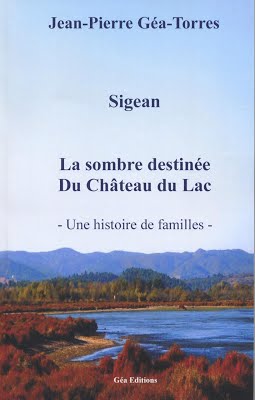
Hello Mr. Kotchoubey!
Thank you very much for all the work you put into your family history website. Quite an impressive undertaking! I’m not familiar with how to navigate such a blog, so I was unable to figure out how to reach you through the site, nor could I determine how to register in order to comment, but with the help of whois.com I was able to find your email address.
I am doing research on the families associated with the Chateau du Lac in Sigean, France, toward the goal of writing a screenplay based on my friend Ross Eliot’s book, “Babette.” http://www.amazon.com/gp/product/B00IY3HE3Q/ref=dp-kindle-redirect?ie=UTF8&btkr=1 One of the characters is Prince (Mikhail?) Kotchouby. I’m very curious about this man’s history,and his association with Count Foulques de Baillard de Lareinty de Tholozan. He is pictured here at the right, probably shortly before his death in the mid-1930s, at the chateau. https://rosseliot.wordpress.com/ Do you have any information on this man, or can you point me towards any resources that might be helpful? I am finding very little online…
I am located in Seattle, USA. I recently traveled to France to interview people associated with the chateau, and to photograph this grand old building, and the more information I find, the more intrigued I am. Perhaps you’re familiar with this website? https://sites.google.com/site/sigeanhistoireduchateaudulac/home/la-sombre-destinee-du-chateau-du-lac
Thanks again for your help,
Eric
Wow, Alex, this was indeed far more than I had expected, but certainly not too much! I’m extremely grateful for every bit of information you passed my way, and highly impressed by the easy-to-follow formatting. I assume you are an academic or at least a published writer? Your prosaic style made this truly a joy to read. And I get the idea you actually enjoy disseminating this knowledge… Good to know, because I’m sure I’ll have many more questions!
I would be glad to learn of some of your sources for coming up with this wealth of information. I’m becoming quite fascinated by the history of Russian aristocracy, as well as French, as it’s a world I have very little knowledge, of but via this research am becoming interested, not only for the colorful history it presents, but for how it pertains to today’s societal structures, both in that part of the world and this. Also, if you have any access to photos of the prince, the count, Zenaide, the chateau… anything would be most helpful.
I hope you’re able to make some use of the photo of Prince Kotchoubey at the chateau. Please feel free to use it if you haven’t already. I think that’s the only one we have, and are also curious as to the identity of the other people lazing about on the veranda sipping wine and sparkling water.
The first character to whom I was introduced via my friend’s relationship with Babette was Prince Felix Youssupov. She claimed to have had numerous interactions with him at the chateau as a little boy, and even suggested that molestation was involved at least once. We can’t substantiate that aspect at all, so are not going to allege that in the screenplay, but we do know that prince was definitely a wild one.
When Ross and I visited the ruins of Chateau du Lac, we were accompanied by a man named Bernard, the grandson of Italian immigrants who had come to work in the count’s vineyards in the 20s or 30s. He was quite passionate about the stories and spent a couple hours with us, excitedly regaling us with tales of intrigue. At that point we hadn’t found the book about the history of the chateau, so it was all new to us, and I’m afraid some things probably got lost in translation as my French is rather basic and my translator friend had a hard time keeping up with him. The story as he told it was significantly different from some of the details I’ve learned from you, and I suspect he may have not had some facts straight as well as my faulty comprehension. Here’s what I understood from Bernard:
— The count and Zenaide divorced in around ’42, and then the he married a German countess.
— Prince Felix Yusupov was a cousin of Zenaide, and even though he had developed a close relationship with the count, he tried to murder him by poison after the divorce, suspecting that the count was just using her and her father for their fortunes, which she would not inherit after the divorce. The only story I could find online regarding poison, however, was from a 1929 Jamaican/British newspaper article about how a couple of times everyone at the chateau fell ill, and it was determined the cause was belladonna poisoning. Then Foulques and Felix went on holiday together shortly after these incidents, and both of them ended up with symptoms, and the conspiracy theory flying around was that someone was trying to kill Felix in retribution for the murder of Rasputin. This was long before any attempted murder of the count by the prince would have taken place, so I don’t know how there could have been a connection between the two.
— During the occupation, a number of Germans were living in the chateau. The count was gleaning information from them and reporting weekly to British intelligence in Narbonne on what he learned. At the same time, he was hosting these Germans, and hoping that they would win the war, because if the Soviet Union were overthrown, then the count (now a prince, after the adoption) would become king of Ukraine. So in keeping with our perception of him as a slippery character, he was basically hoping to get out of deep debt by eventually becoming Ukrainian royalty, hence his implied support for the Germans, while at the same time keeping a foot on the Resistance side, just in case.
Any feedback on these bits of information that you could provide would be most welcome! Also, besides the website about the history of the chateau and the oral history I received from Bernard, I have no written accounts or photos regarding what went down while Foulques and Zenaide and their friends and families were living at Chateau du Lac. Any more reading material or contacts would be highly appreciated.
Another aspect of research I’m engaged in regards a branch of the family tree that is only related to Prince Michel distantly and by marriage. These people are important characters in the story, and as of yet I have no leads whatsoever to learn about them… If you have any suggestions on how I might find information on the Bonnefonts, please let me know! Bernard said that Germaine Bonnefont was a cousin of the count, but that’s all we know, except that she was from Montauban. As it was she and her American husband, Robert Brown, who abducted our main character as a baby in 1928 and took him to France, it’s imperative that we find out how she met Mr. Brown and why they abducted the child, and why they came to France and lived in “la maison rose” next to the chateau. This may be out of reach as far as your field of knowledge, so no worries if you can’t help me there.
Feel free to be as pedantic as you need to be. I’m devouring every bit of information I can get my hands on at this point… the San Donatos may have to wait for a while, but still it’s an interesting fact!
Again, thank you very much for your generous assistance, and I’ll be glad to let you know how things are coming along.
All the best,